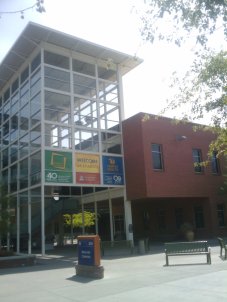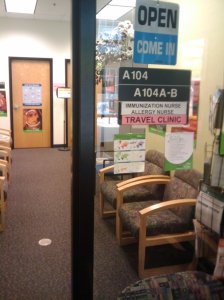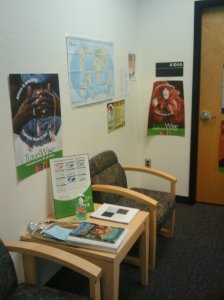 This past week I stopped by campus health. I had learned about the immunization, allergy and travel clinic, and I wanted to find out what it could do for me.
This past week I stopped by campus health. I had learned about the immunization, allergy and travel clinic, and I wanted to find out what it could do for me.
I quickly moved from the triage section to the immunization clinic located in the northeast corner. It was small with an office like feel to it. A few students waited to be seen. I new it wouldn’t take long before the nurse called me. While I waited, I noticed the posters on the walls. They had images of exotic cultures and lands. Each had text to promote proper immunization before heading abroad. One poster read, “Asia is beautiful, but Japanese Encephalitis isn’t.” These posters were produced by TravelWise. They had them for various countries. Ironically, the clinic doesn’t offer the Japanese Encephalitis immunization.
The nurse called me in, and asked me what I needed. I told her I was in a journalism class, and I frequently crossed the border into Mexico. I wanted to know if I should get any immunizations. She told me the clinic didn’t work that way. I would need to make an appointment to discuss the country or countries that I would visit. They would put together a packet, by Travex, of all the immunization I would need. I would then meet with them for a 45-minute debriefing, and decide what immunizations to get.
Since I didn’t call ahead, they didn’t have a packet to discuss with me. Fortunately, the nurse said the only shot she could think of would be a Hepatitis A series. However, she said that anyone in the U.S. who eats out should probably get the shot.
So, Butts, unwashed hands and food came into my mind, and I didn’t grab takeout for the rest of the day.
Pushing aside those thoughts, I asked about H1N1 vaccine. She told me the season was coming to an end, but it was recommended for people who would be traveling, especially by plane. I was pretty sure that I wouldn’t be traveling to the extent that I would need it. But, then she said it was free for University of Arizona student, and the batch on hand would be expiring soon. With H1N1 being new to my age group, I decided to grab the shot while at the clinic
 My Childhood memory crept into my thought- Oh, this is gonna hurt. Of course, it didn’t.
My Childhood memory crept into my thought- Oh, this is gonna hurt. Of course, it didn’t.
So, I should be immune against H1N1, and I know how to use the campus travel immunization clinic- all it takes is a destination or two, a call, and an appointment.












